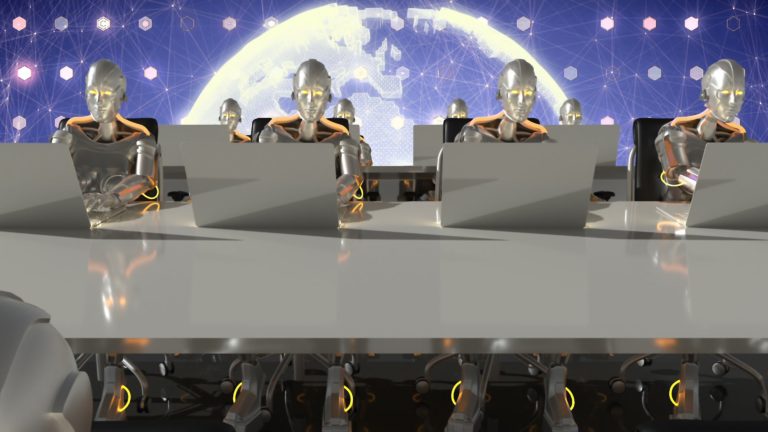Work, a fusion of two Old English words: wyrcan and wircan.
In the past, work was related to craftsmanship. One person took end-to-end responsibility for producing an outcome. The farriery, for example, was responsible for cleaning and shaping the sole of a horse’s hoof and then selecting the appropriate size of a horseshoe and affixing it to the hoof with nails. The industrial revolution changed the traditional concept of work as manufacturing led the way in creating faster and cheaper end-products. The notion of a job became a collection of tasks that didn’t necessarily have to be related to each other, but just a set of actions that in the end delivered a complete outcome. Then the cognitive revolution began in the 1950s, where a shift in redefining work evolved from task completion to problem-solving. Fast forward to today with the Fourth Industrial Revolution, where technology has a big impact on how we work.
According to McKinsey, “the introduction of the personal computer, for instance, has enabled the creation of 15.8 million net new jobs in the United States since 1980, even after accounting for jobs displaced. About 90 percent of these are in occupations that use the PC in other industries, such as call-center representatives, financial analysts, and inventory managers.” The current state of technology has led to AI and robotics that automate simple tasks and free up their human counterparts to do more meaningful work. Robotics and robotic process automation have transformed manufacturing while digital technologies are redefining the limitations of time and distance.
The World Economic Forum projects that while the future of jobs will be more machine-powered and data-driven and 1.75 million jobs will be gained in human service skills. In-demand techniques such as design thinking, problem-solving, communication, and listening will shape the future workforce as machines continue to take over repeatable tasks. Additionally, roles will continue to be redefined to bridge the gap between humans and machines.
Rethinking the workforce
Organizations have vast options for finding workers, from finding full-time employees, to finding managed services, outsourcing, gig workers, contractors, and crowdsourcing. In 2017 it was reported that 35% of the US workforce is contract-based work and that number is only growing. With such access to a huge and vast talent pool, organizations can now easily find individuals that have creativity, passion, and skill sets that blend well with machines.
As the definition of work and the type of work continues to evolve, so does the workplace. No longer do employees have to be confined to the four walls of a workplace. The rise of digital communication and collaboration platforms have allowed for the ability to have a more distributed workforce. Alanna Cotton, head of mobile computing at Samsung states, ”People are using technology like voice-activated apps and smartphone calendars to enhance their everyday lives and that is also translating to their work. As employers, we have to embrace that — how do we give people the opportunity to work from anywhere while still being productive?”
The rise of a distributed workforce also means the suffering of workplace culture. In a recent survey of global executives, culture is the most significant self-reported barrier to digital effectiveness.

In a Deloitte interview, Yale School of Management professor Amy Wrzesniewski has observed, “In previous generations, people would spend decades and even their entire careers embedded in the same organization. In those cases, the sense of membership buoyed both individuals’ identities and their psychological health.” Those days are long gone. Companies can no longer guarantee lifelong employment. According to a report from the Bureau of Labor Statistics, the average person changes jobs 10 to 15 times (with an average of 12 job changes) during his or her career. Job security is not something an employer controls anymore. The worker controls it.
Making the future of work more valuable
As with any line of work, the purpose is what drives us. Modern-day advancements in technology can easily drive more efficiency and reduce cost, but there are ways to harness these trends in a deep manner that will, in turn, increase value across organizations, workers, and the consumer. According to the Zoom out/zoom in approach, many companies are spreading themselves too thin to deal with an array of initiatives. But how do you direct change? With these three steps:
- Imagine. Imagine the possibilities of the future by leveraging industry-specific data analytics and insights to define your ambition and strategy for transforming the workforce for the future. Set goals for the future of work that reaches beyond cost and efficiency to include value and meaning.
- Compose. Analyze and redesign work, workforce, and workplace options that take advantage of the value of automation, alternative talent sources, and collaborative workplaces.
- Activate. Align the organization, leadership, and workforce development programs to access skills, curate next-generation experiences, and engage the workforce of the future in long-term relationships and business leaders in new ways of working.
The workforce and employers have the opportunity to use technology in a way to create real valuable benefits for organizations and in turn, society. The future of work is ours to shape.





